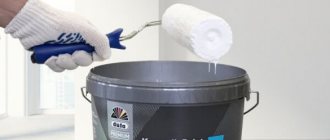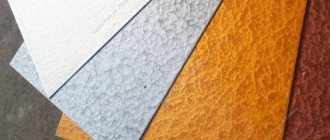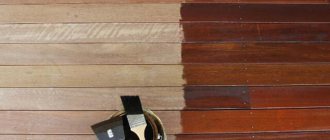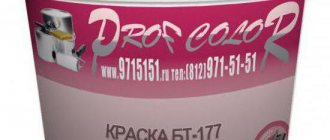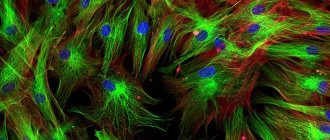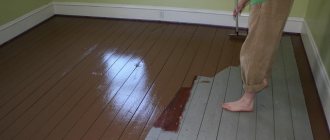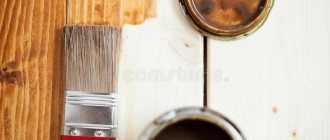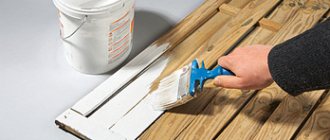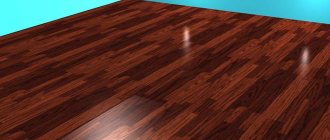Fire is an unpredictable phenomenon that cannot be controlled. High temperatures also release toxic substances and pose the risk of entire buildings collapsing. This is its main danger. It is impossible to avoid negative consequences after a fire, but a person can take preventive measures and then possible risks are minimized. The most affordable option is fire-resistant paint.
Which metal structures are subject to fire protection?
Load-bearing parts, support elements, connecting nodes, surfaces with structural functions, open surfaces and fasteners must be protected from flames. Metal fire protection is used for all types of building materials. However, it is not required for parts that are not structural elements of buildings. And also provided that the object does not belong to the class of fire hazardous structures.
Metal fire protection is used for all types of building materials.
Briefly about the main thing
The main task of fire-retardant paint for wood is to isolate surface areas that may be exposed to open fire from possible flames. At the same time, if a fire does not happen, the painted surface should look as attractive as possible.
Also, the use of fire retardant paint is a must have for those who develop plans for evacuating people in case of fires. To pass a fire inspection, you need to have certificates confirming the degree of fire protection, which are issued only by the manufacturer of quality products.
Additionally,
the exhibition of houses “Low-Rise Country” expresses its sincere gratitude to the specialists for their assistance in creating the material.– only certified construction chemicals.
For more details, visit neomid.ru
Ratings 0
Read later
Features of compositions used for fire protection
The produced fire retardant composition for metal structures must comply with:
- Fire safety standards;
- Duration of service life (15-20 years);
- Environmental requirements;
- Vibration resistance;
- Aesthetic appearance.
The produced fire retardant composition for metal structures must comply with fire safety standards.
Ferum-Pro
Fire retardant paint for metal
Fire resistance R30-R120
25 year warranty
Application 1 mm per pass
Textured appearance
- Durability and environmental friendliness
- Excellent hiding power and appearance
- Multi-level filtration and degree of grinding
- For indoor and outdoor work under a canopy
270 ₽/kg promotion -40%
In stock
More details
Application
Fire protection for metal is carried out in different ways. In the first case, metal structures are sheathed with a special material that ensures the safety of the structure from fire. Another way to protect against fire is to plaster the structure with a special solution. The third method is fire-resistant paint for metal structures. Despite the fact that all methods are effective, the least labor-intensive is painting with fire retardant compounds for metal structures.
The least labor-intensive is painting with fire retardant compounds for metal structures.
Protection of metal surfaces
Load-bearing and supporting elements are usually made of metal; it is their condition that determines whether the building will collapse or survive. Fire protection of metal structures significantly increases the time during which personnel or visitors can leave a burning facility and save material assets. Fire-resistant paint makes the work of firefighters easier by preventing the rapid spread of flames throughout the building for an hour or more. The material resists surface heating to high temperatures, which deprive steel of its strength.
Why is processing so important?
The tensile strength of each metal alloy is different, so when a steel structure is heated to 400°C, the steel loses its strength, the mechanical strength of aluminum decreases at 80°C, and the strength of zinc decreases significantly at 30°C.
Since the metal base of any structure is under the influence of loads, a qualitative deterioration in the properties of the material due to heating can lead to deformation and even complete destruction of the entire structure. It is for this reason that fire retardant paint for metal structures is necessary.
The tensile strength of each metal alloy is different.
Recommendations and selection criteria
Some structures, according to fire safety standards, require mandatory treatment with fire-resistant paint:
- Load-bearing frame of the building, finishing and fastening elements;
- Pipelines;
- Engineering system units;
- Life-sustaining communications;
- Cable routes.
It is important to consider the material from which they are made - this is a key point of choice.
Some structures, according to fire safety standards, require mandatory treatment with fire-resistant paint.
In addition to protection from high temperatures, paints must meet the following technical characteristics:
- Fire protection;
- Wear resistance and resistance to mechanical damage;
- Preservation of properties regardless of surface temperature, humidity level and other factors. In this case, it is necessary to take into account the type of room in which the treatment will be carried out;
- Plastic;
- Anti-corrosion additives for fire-retardant paints on metal or antiseptics for wooden structures;
- Strength;
- Low toxicity;
- Resistance to chemical active substances.
Color is also important. Red fire paint is suitable for marking load-bearing parts or fire safety corner equipment. To decorate the room, you can use different colors from white to charcoal black, depending on your desire.
Red fire paint is suitable for marking load-bearing parts or fire safety corner equipment.
How does fire retardant coating work on metal structures?
Thanks to proper use of the product, the paint for fire protection of metal structures will not interact with the external environment. When the metal is heated, the coloring composition decomposes, forming an outer coke layer that protects the metal from high temperatures, preserving its properties.
It subsequently decomposes, releasing water and gas, which inhibit combustion. And the coke film only becomes stronger, enhancing protection.
When the metal is heated, the coloring composition decomposes, forming an outer coke layer that protects the metal from high temperatures.
Types of fire protection
Refractory mixtures are divided into two main types:
- Intumescent solutions
When heated, these mixtures increase in size several tens of times due to the release of gases during combustion. A foam coating is formed that protects materials from fires. It effectively prevents fire from penetrating the structure and ensures no damage.
- Non-intumescent solutions
This type of solution acquires a glassy coating under the influence of fire. It is less reliable, but has decorative properties. The solution resembles a fire retardant impregnation and is used more often in residential buildings.
- Water-dispersion paint
The mixture is made on the basis of water, so it is used only inside buildings, since the coating on the outside will quickly be washed away by rain. It protects products from heating by the appearance of foam, which becomes a barrier between the flame and the painted surface.
Thanks to its water base, the mixture is consumed slowly, does not emit an unpleasant odor and is easily applied to floors, walls, ceilings, attics, and doors.
Species and types
Today there are 2 types of fire-resistant paint and varnish products. Classification of fire-resistant paint:
- Intumescent composition. During interaction with an open fire or high temperature caused by a fire, the paint increases in volume, forming a foamy mass of burnt coke layer. The chemical composition of the paint does not allow the metal surface to warm up;
The chemical composition of the paint does not allow the metal surface to warm up. - Anti-foaming agent. This paint and varnish product belongs to multi-layer products with a constant volume, because their chemical composition includes silicates, which form a dense protective layer on the base. The only negative is the considerable consumption of paints and varnishes with lower efficiency.
This paint and varnish product belongs to multi-layer products with a constant volume.
How to order FERUM materials
Just contact us
- Call +7 (499) 343-11-01
- Request a call back
- Write
Let's choose paint
- We will provide samples
- Let's determine fire resistance
- Let's calculate the cost
Let's calculate the quantity
- Based on design data
- According to regulatory documentation
We will ship or deliver
- From 1 day
- Pickup or delivery
- 25 year warranty
Characteristics of fire-retardant paint mixtures
In a normal situation, the fire-fighting agent is inert, but heating the structure causes the coating to decompose, and then the metal is enveloped in a coke layer, which maintains the temperature, preserving the structure. The decomposition process releases gas and water, which slow down the effects of fire. Then the coke layer is strengthened, thanks to which the structure remains intact.
Different types of fire-fighting compounds have different characteristics. This way, the non-intumescent agent forms a thin, but at the same time durable, heat-insulating film on the surface. However, despite its strength, this protection burns out very quickly, for this reason this type of paint is rarely used.
If you choose non-intumescent products, then you should give preference to paint that contains potassium silicate, because sodium-silicate compounds, when interacting with water, create white stains.
Intumescent compounds have different properties; when heated, their quantity increases 70 times, and the thickness of the heat-insulating layer also increases. This allows the metal to be preserved from loss of strength even when heated for more than 1.5 hours.
Fire-fighting compounds of different types have different characteristics.
Prices for work
| Fire resistance limit, R minutes | Processing price including materials, incl. VAT 20% / type of paint |
| R15/R30 | from 400 RUR/m2, weather-resistant, water-borne |
| R45 | from 500 RUR/m2, water-based, weatherproof |
| R60 | from 700 RUR/m2, water-based, weatherproof |
| R90 | from 850 rub./m2, thin-layer, structural thermal insulation, plaster composition |
| R120 | from 900 rub./m2 |
| R150 | from 1300 rub./m2 |
Composition and description
Based on the requirements regulated by NPB 236-97, GOST R. 53295-2009, paints are divided into 7 groups, maximum flame resistance, which varies 7-3 group 15 - 90 min, 1 group up to 150 min.
At production, the chemical composition of fire-resistant materials is indicated in the accompanying documents. However, this data is usually not publicly available due to the manufacturer's trade secrets. In open sources there is only information about the presence of film-forming components in them, which foam when heated. Also in their chemical composition there are reagents such as thermally active graphite, crushed mineral fillers and certain types of salts.
In open sources there is only information about the presence of film-forming components in them, which foam when heated.
What does it protect against?
Fires can be hydrocarbon and cellulose.
The first group includes the combustion of any sources of hydrocarbons: oil, all its fractions, methane, gaseous fuel. When organic substances with a huge percentage of hydrocarbons are burned, the temperature rises rapidly and reaches record values exceeding 1000 ℃.
All other fires that burn wood, paper, finishing materials with cellulose, textiles, cardboard and many other products are called cellulose fires.
In such cases, the temperature rises more slowly than when burning fossil fuels. The maximum values do not reach 1000℃. Typically, the limit values are 800 ℃, in extreme cases - 900 ℃.
In government regulations, the success of the fire-retardant action of paints is usually assessed by the length of time it takes the metal to reach a temperature of 500 ℃.
Consequently, one cannot count on significant protection of structures with paints in the event of possible fires of large volumes of organic fuel.
Certificate of conformity
High-quality fire retardant products are confirmed by a fire safety certificate indicating the following information:
- Brand and name of paint;
- Which group of fire retardants does it belong to?
- Type, name, quantity, required thickness of layers of primer and finishing solutions, protective equipment and decorative compositions that can be combined with this product;
- Coating thickness, paint consumption, effectiveness of protective properties.
High-quality fireproof products are confirmed by a fire safety certificate.
What about the documents...
All NEOMID products undergo regular mandatory certification for compliance with the necessary fire safety standards. In particular, fire protection received a certificate of conformity confirming that NEOMID 450-1 was created in accordance with TU 2499-048-98536873-2009 and received I (first) group of fire retardant efficiency. Remains resistant to aging provided the application rate is at least 250 g/m². Also, fire protection corresponds to the II (second) group of fire retardant efficiency, provided that it is applied in an amount of at least 150 g/m².
Fire retardant interior paint NEOMID complies with the technical regulations on fire safety requirements in accordance with Federal Law dated July 22, 2008 No. 123 FZ according to GOST R 53292-2009 (clauses 5, 6.1, 6.3) Fire retardant compositions and substances for wood and wood-based materials .
The tests were carried out according to the methods approved in the Order of the Federal Agency for Technical Regulation and Metrology dated February 18, 2009 No. 68-Art.
Certificate of conformity for paint NEOMID 450-1 Source neomid.ru
Requirements for fire retardant paints
Basic requirements for fire retardant coatings:
- Long service life, resistance to aggressive environments, including high humidity and vibration. The paint should not crack;
- No toxicity;
- Attractive appearance of the coating, including the ability to paint any color.
These requirements allow specialists to select the most optimal options.
The paint should not crack.
Characteristics of intumescent compounds
A common feature of this group of drugs is the ability to intumescent.
This tricky term refers to the combination of the coke formation process with parallel foaming. The word is of medical Latin origin and means the phenomenon of swelling, thickening. Indeed, when heated, intumescent fire-resistant paint “swells” several times.
The effectiveness of fire retardant coatings for metals is determined by several factors:
- heat absorption for coke layer formation reactions;
- release of gaseous products that lower the temperature of the thermal insulator;
- the ability of the resulting porous product to prevent heating of the base;
- reflection of thermal waves by foam coatings;
- blocking the access of oxygen.
Foam paint is characterized by high adhesion rates, which ensure strong adhesion to metal. The result is achieved when the paint contains several components and ensures their correct ratio.
Typically, fire-retardant paints for metal contain film formers, carbonizing substances, mineral acids and their functional derivatives, and foaming reagents.
The ability to form films is inherent in styrene-acrylic composites, epoxy and silicone resins.
Compounds with a large mass fraction of carbon are prone to carbonization, examples of which are pentaerythritol, dipentaerythritol and other similar structures.
Of the inorganic acids, phosphoric acid directly or a polyphosphoric ammonium derivative is most often used.
The ability to foam well, due to the release of gaseous products, is possessed by the so-called porophores. Among them, the most famous are melamine, urea and similar compounds.
Mandatory components of fire-retardant paints for metals are also halogen paraffins, pigments, and fillers.
Application rules
Fireproof paints and varnishes are applied in several stages. The number of layers is affected by their flame resistance, as indicated by the manufacturer in the product documents. The material consumption is also indicated there.
Each new treatment should be carried out only after the previous coat of paint has completely dried. High adhesion can be achieved only by degreasing the metal surface.
Priming is mandatory because it protects the metal structure from corrosion and improves the adhesion of paint to the surface without causing peeling and cracking. However, the primer must be compatible with the fire retardant
Metal structures can be painted with protective agents either manually using brushes and rollers, or using production equipment using spray guns or spray stations.
Fire retardant paint compositions can be tinted. It is permissible to use varnish as a topcoat, but only from one manufacturer, so that they are as compatible as possible.
Each new treatment should be carried out only after the previous coat of paint has completely dried.
Reviews
We express our gratitude for the mutually beneficial cooperation. For 7 years we have been successfully using Ferum paints at facilities throughout Russia. Fire retardant paints fully justify the declared characteristics and properties.
Zaripov R. A. General Director of AS-ECO LLC
We thank the management of Alekmo for the clear organization of work, high level of service, compliance with deadlines and all obligations assumed. We look forward to further cooperation.
Saprykin E.F. Deputy Director of JSC "StroyMontazh"
During the construction of a complex of gas stations in the Lipetsk region. in the period 2013-20114. fire-resistant metal “Ferum-AS” is used, operated in open atmosphere conditions. In December 2022 The condition of the coating of metal structures was checked: no peeling, no rust was found.
Zaitseva V.I. Chief Technologist of Delta-Stroy LLC
Step-by-step surface application technology
Sequence of work:
- Cleaning the surface from rust is done with hard bristled brushes or a grinder. The shavings are swept away.
- The base is primed with a special anti-corrosion agent compatible with fire-resistant paint.
- The coloring composition is mixed with a construction mixer or manually. Painting is done using a well-dried primer.
The thickness of the fire retardant layer should be 1-1.2 mm, otherwise swelling will occur unevenly and the layer will rupture.
After complete drying, the metal structure can be used.
The coloring composition is mixed with a construction mixer or manually.
Fire protection, anti-corrosion, water-based paints
PRICE LIST
| Object of protection | Name of fire retardant compounds | Price |
| Fire protection of metal structures | Fire retardant paint Nertex | Find out the price |
| Fire retardant coating Nertex-OK | Find out the price | |
| Fire retardant composition Nertex-TNS | Find out the price | |
| Fire retardant paint Frizol | Find out the price | |
| Fire retardant coating Frizol-OK | Find out the price | |
| Fire retardant composition Frizol-TNS | Find out the price | |
| Fire retardant composition Frizol-EP | Find out the price | |
| Fire retardant composition Frizol-EPK | Find out the price | |
| Fire protection of reinforced concrete structures | Fire retardant composition Nertex-U | Find out the price |
| Fire protection of wooden structures | Fire-retardant impregnation Nerta | 190 rub/kg |
| Fire retardant paint Nertex-D | Find out the price | |
| Fire retardant varnish | HVAC Varnish | 1500 rub/kg |
| Fire protection of cables | Nertex-K paint | Find out the price |
| Fire retardant composition Nertex-KP | 350 rub/kg | |
| Fire retardant composition Frizol-Graf | Find out the price | |
| Fire protection of escape routes | Flameout | 240 rub/kg |
| Anti-corrosion primers and enamels | AK-511 | 250 rub/kg |
| Antikor-01 | 280 rub/kg | |
| Antikor-02 | 300 rub/kg | |
| Antikor-03 | 600 rub/kg | |
| Antikor-PU04 | 930 rub/kg | |
| Antikor-05 | 820 rub/kg | |
| GF-021 | 180 rub/kg | |
| PF-115 | 270 rub/kg | |
| ХВ-1003 | 570 rub/kg | |
| Zinc-EP-1001 | 790 rub/kg | |
| EP-1001 | 540 rub/kg | |
| EP-1002 | 850 rub/kg | |
| Water based paints | Acrylic paint for walls and ceilings | 130 rub/kg |
| Acrylic paint for kitchens and bathrooms | 170 rub/kg | |
| Acrylic paint for facades | 320 rub/kg | |
| Quartz soil BetonoKontakt economy | 160 rub/kg | |
| Deep penetration primer | 145 rub/kg |
Checking the quality of fire protection treatment of steel structures
The quality of products and the degree of fire protection can be confirmed by the following documents:
- Acts from each quality control;
- Acts for carrying out hidden work;
- Additional documentation including a record of thickness measurements as well as tests performed.
The documentation must be signed by fire inspection representatives who have verified the quality of the airbag products. The documents are issued by the contractor who has a license to carry out the relevant work and examinations.
The procedure includes the following steps:
- Visual inspection;
- Instrumental research (with or without destruction);
- Dipstick;
- Measurement with a magnetometer;
- Fence of elements;
- Carrying out tests and examination of paint in licensed laboratories.
The procedure includes a visual inspection.
Features of fire-resistant paint
Applying fire retardant paint is no different from applying a classic paint coating. The peculiarity is that, with virtually the same paint consumption, the structure receives quite serious protection from fire.
- As a rule, such paint is used to paint load-bearing structural elements, since treating the entire building or structure is very expensive.
- But this is not forbidden; small baths, for example, should be completely treated with such paint.
Another feature is that this coating does not spoil the appearance of the material and the product as a whole, which is very important for further work.
Fire retardant impregnation for floors
The procedure for applying impregnation to wooden floor structures depends on what kind of material the fire protection will be made of. All compounds can be divided into two groups:
Deep penetration. Fire protection of wooden floors with a composition of the deep penetration group is carried out in a hot-cold bath or in an autoclave under pressure. According to the PPB, only a company with the appropriate permits can perform application work.- Moderate penetration. This group includes fire retardant compounds for cleaning floors, as well as fire retardants, which are applied with a brush or roller.
A truly reliable and fire-resistant coating can only be obtained using materials of the first group. Complex impregnation of moderate penetration wooden floors loses its properties after a short time.
The safety of those in the premises is paramount. Impregnated floors and floor coverings treated with fire-retardant paints significantly reduce the risk of fire.
After the work is completed, a mandatory inspection is carried out. An act is drawn up, which includes the type of fire-prevention impregnation of wooden structures under the floors, as well as on top of the coverings, indicating the date of treatment and the fire resistance class.
Pirilax-Classic
Price: 241 rub.
Biopyren "Pirilax" is intended for outdoor use, as well as as a fire-retardant impregnation with an antiseptic effect for wood. After processing, the wood is assigned a fire hazard class of KM1. Biopyren "Pirilax" has a slight pine odor, which makes work easier during the fire retardant treatment process. After drying, the smell dissipates fairly quickly. Wood treated with the composition acquires an amber tint; the wood texture is not painted over. More details Quick order Add to cart
Pirilaks-Therma
Price: 241 rub.
Impregnation Biopiren "Pirilax-Terma" is intended for interior work. It is also used as a fire-retardant antiseptic impregnation for wood. Wood after treatment with the composition in question becomes slightly flammable and difficult to ignite, its smoke-forming ability becomes moderate. Suitable for treatment inside saunas and baths. Biopyren "Pirilax-Terma" will protect the tree from mold fungi, insect pests and deterioration. The impregnation is assigned the fire hazard class of wood KM1. More details Quick order Add to cart
